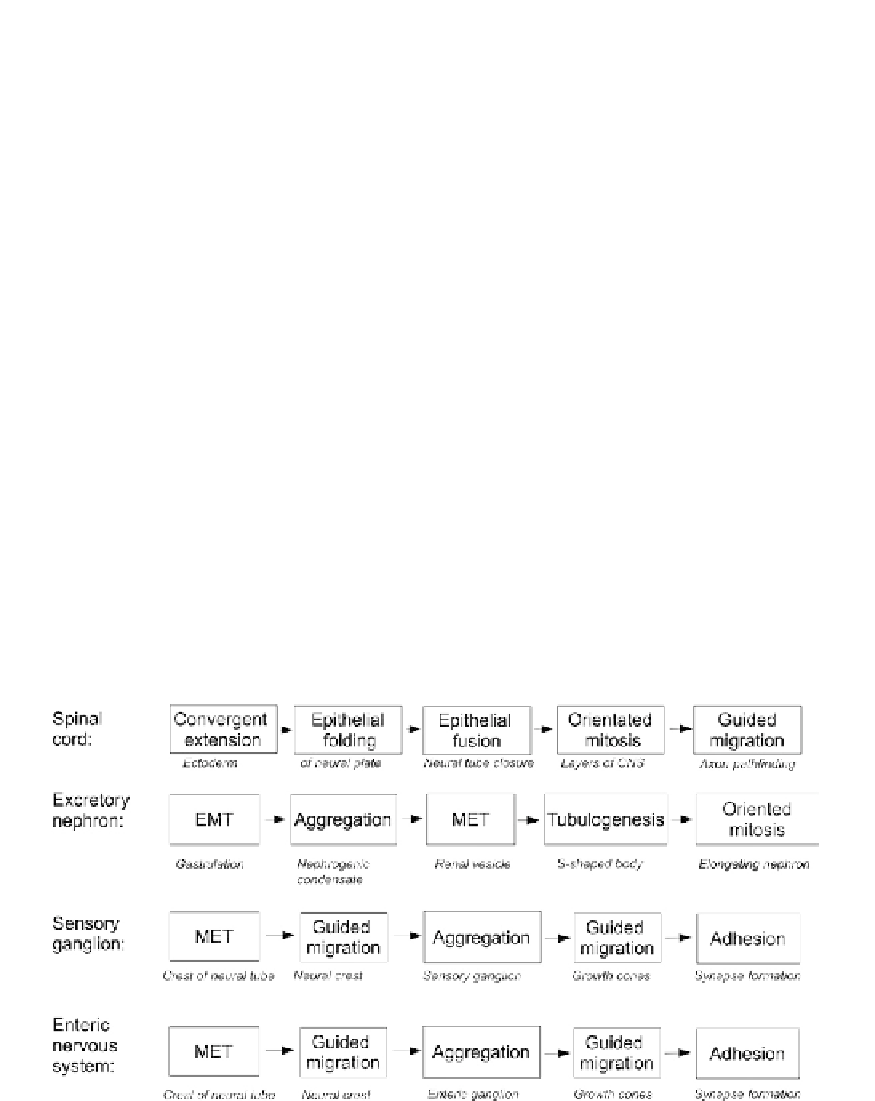Biology Reference
In-Depth Information
Therefore, although the module metaphor is natural and helpful, within limits, to discus-
sion mechanisms of morphogenesis, it is essential to remember that it is a metaphor. An alter-
native term was suggested by Fran¸ois Jacob, who wrote with great prescience about the
emergence of new properties in multi-level biological systems as early as 1973.
23
In Jacob's
nomenclature, the 'modules' are referred to as 'integrons' because they arise through the inte-
grated activity of lower level agents. Although using this word does add extra jargon to a field
already oversupplied with it, the word 'integron' has the merit that it does not come loaded
with shades of meaning more appropriate to engineering than biology. Jacob's own explan-
ation of the word 'integron' is as follows: '
At each level, sub-units of relatively well-defined size and
almost identical structure associate to form a unit of the level above. Each of these units formed by the
integration of sub-units may be given the general name “integron”. An integron is formed by assem-
bling integrons of the level below it; it takes part in the construction of the integron of the level above
'
.
23
The importance of evolutionary processes being able to produce subtly different versions
of even 'basic', cell-level modules or integrons within the same organism can be demon-
strated by a simple paper exercise that can be an instructive component of a class tutorial.
Begin with a list of alleged basic modules such as the list given in Chapter 27 (proliferation,
migration, aggregation, and so on). Now analyse different aspects of development (for
example, limb, lung, enteric nervous system) by constructing for each a flow-chart sequence
of these basic behaviours. The exercise can be done at different levels of detail, but it is gener-
ally simple to come up with diagrams such as those in
Figure 28.4
. Once a set of these
diagrams has been drawn up (perhaps one per pair of students in a tutorial group), exchange
them and challenge the recipient of a diagram to work out what body part is represented. It
will be apparent immediately that this part of the exercise is much more difficult
d
impossible
if the participants have a broad enough knowledge of embryology to know about many
candidate body parts. Indeed, the impossibility of this working forward may be apparent
FIGURE 28.4
Examples of module sequences constructed by analysing the development of body parts. This
figure has been constructed to illustrate the limitations of this idea, as explained in the main text.

